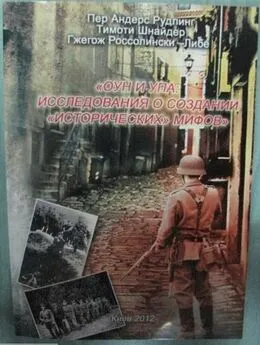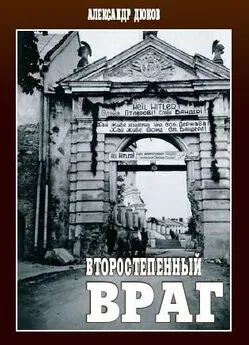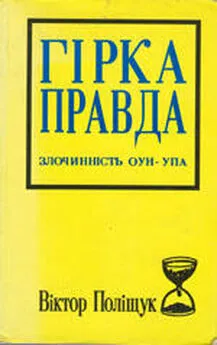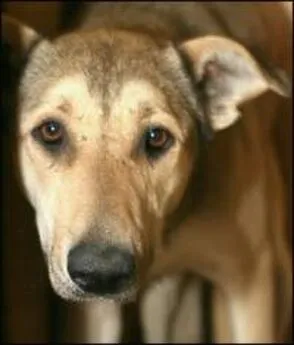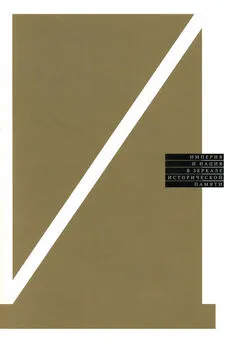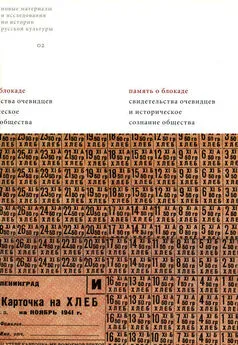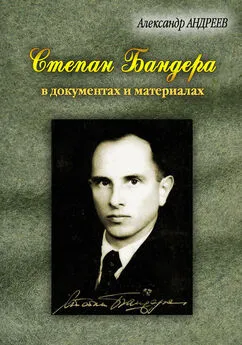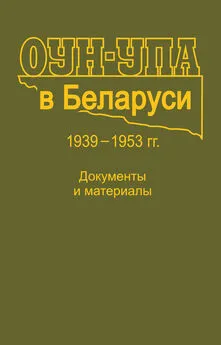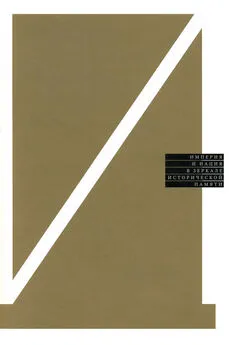Пер Рудлинг - ОУН и УПА: исследования о создании исторических мифов. Сборник статей
- Название:ОУН и УПА: исследования о создании исторических мифов. Сборник статей
- Автор:
- Жанр:
- Издательство:Золотые ворота
- Год:2012
- Город:Киев
- ISBN:978-966-2246-16-2
- Рейтинг:
- Избранное:Добавить в избранное
-
Отзывы:
-
Ваша оценка:
Пер Рудлинг - ОУН и УПА: исследования о создании исторических мифов. Сборник статей краткое содержание
Сборник статей «ОУН и УПА: исследования о создании «исторических» мифов» является вторым изданием в серии «Историческая правда», основанной Международным антифашистским фронтом в 2011 году.
В издании представлены исследования современных западных ученых — Пера Андерса Рудлинга, Тимоти Д. Шнайдера, Гжегожа Россолинского-Либе на тему украинского радикального национализма, фашизма, создания антиисторических мифов вокруг ОУН-УПА, преступлений против человечности, попыток героизации и реабилитации этих организаций и их членов.
Большинство исследований в Украине публикуются впервые.
ОУН и УПА: исследования о создании исторических мифов. Сборник статей - читать онлайн бесплатно полную версию (весь текст целиком)
Интервал:
Закладка:
250
Howard Aster, “Refl ections on the Work of Peter J. Potichnyj,” Journal of Ukrainian Studies 21, no. 1–2 (1996): 226–227. Potichnyj largely limits his focus to the period during which OUN and UPA took a more liberal and open position to national minorities. See, for instance, Potichnyj and Shtendera, Political Thoughts of the Ukrainian Underground, a collection of essays partly based upon Mykola Lebed’s archives. Unsurprisingly, there is next to nothing in the Litopys UPA on the topic of the Volhynian massacres in 1943, and total silence on UPA murders of Jews.
251
Andreas Umland, “Die andere Anomalie der Ukraine: ein Parlament ohne rechtsradikale Fraktionen,” Ukraine-Analysen, no. 41 (2008): 7–10. Émigré nationalists who reestablished contacts in Ukraine, used to clandestine work, were often disappointed the organization and nature of the nationalists in the old country. See, for instance, Sukhovers’kyi, Moi Spohady, 237.
252
For examples of this narrative, see Petro Sodol, “Foreigners in the UPA,” Ukrainian Quarterly 58, no. 4 (2002): 342–348; Volodymyr Kosyk, “Organizational Conditions and the Initial Struggle of the Ukrainian Insurgent Army (UPA),” Ukrainian Quarterly 58, no. 4 (2002): 310–325; Volodymyr Viatrovych, [V’’iatrovych] “The Communist Alliance against the Ukrainian Insurgent Army (UPA),” Ukrainian Quarterly 58, no. 4 (2002): 326–341; Herbert Romerstein, “The KGB Disinformation Campaign Against Ukrainians and Jews,” Ukrainian Quarterly 58, no. 4 (2002): 349–360.
253
Serhiichuk, Nasha krov — na svoii zemli, 3, 42, 77.
254
Vasyl’ Derevins’kyi, Stavlennia OUN(b) i UPA do susidnikh narodiv ta natsional’nykh menshyn (Kyiv: Natsional’na Akademiia nauk Ukrainy, Instytut istorii Ukrainy, 2006), 44.
255
Serhii Hrabovs’kyi, “Tak proty koho zh voiuvav Shukhevych u Bilorusi?” Ukrains’ka Pravda: http://www.pravda.com.ua/news/2007/11/13/66774.htm (accessed November 18, 2007). On Hrabovs’kyi’s celebration of OUN-UPA and Waffen-SS division Galizien, see Marples, Heroes and Villains, 231–232.
256
Hunczak, “Problems of Historiograhy,” 136.
257
Morton Weinfeld, Like Everyone Else. but Different: The Paradoxical Success of Canadian Jews (Toronto: McClelland & Stewart, 2001), 213–214; Daniel Mendelsohn, Lost — A Search for Six of Six Million (London: HarperCollins, 2007), 99; Golczewski, “Shades of Grey,” 114–155.
258
See, for example, Himka, “The Ukrainian Insurgent Army and the Holocaust,” 15, citing the USC Shoah Foundation Institute for Visual History and Education, 20586 Jack Glotzer, 12–15; Spector, The Holocaust of Volhynian Jews, 358; Ahron Weiss, “Jewish-Ukrainian Relations in Western Ukraine During the Holocaust,” in Peter J. Potichnyj and Howard Aster, eds., Ukrainian-Jewish Relations in Historical Perspective (Edmonton: CIUS and University of Alberta, 1990), 409–420; Weiner, Making Sense of War, 270–271.
259
See Mykola Lebed, UPA: Ukrains’ka Povstans’ka Armiia (n.p. 1946), 35–36; for other early claims on Jews in UPA, see Petro Mirchuk, Ukrains’ka Povstans’ka Armiia,1942–1952 (Munich: Cicero,1953),69–72.
260
Lebed’, Ukrains’ka Povstans’ka Armiia, 35–36, cited in Friedman, “Ukrainian-Jewish Relations,” 204.
261
Leo Heiman, “We Fought For Ukraine — the Story of Jews Within the UPA,” Ukrainian Quarterly, vol. 20, no. 2 (Spring 1964):33–44.
262
Dr. Stella Krentsbakh, “Zhyvu shche zavdiaky UPA,” in Petro Mirchuk and V. Davydenko, eds., V riadakh UPA: Zbirka spomyniv buv. Voiakiv Ukrains’koi Povstans’koi Armii (New York: Nakladom T-va b. Voiakiv UPA v ZDA i Kanadi, 1957), 342–349.
263
“The questionable source mentioned here is the ‘memoir,’ allegedly by a Jewish woman named Stella Kreutzbach, in Nasha Meta, Toronto 27 and December 4, 1954; Ukrainske Slovo (Buenos Aires), October 10, 1954; Kalendar Almanakh na 1957 Rik (Calendar Almanac for 1957) (Buenos Aires): 92–97. Kalendar also features an article by Dmitry Andreyewsky (pp. 88–91), in which he states that Stella Kreutzbach went to Palestine after the war, where she was later employed as a secretary in the foreign ministry, and that several weeks after the publication of her memoirs in the Washington Post (which the Ukrainian publication credited for fi rst releasing the memoirs) she was mysteriously shot and killed. I checked the Washington Post of that period and did not fi nd the memoirs. At my request, Dr. N. M. Gelber of Jerusalem made inquiry in the foreign ministry there; the reply was that the ministry had never had an employee by that name and that such a case of homicide was entirely unknown. Moreover, a careful analysis of the text of the ‘memoirs’ has led me to the conclusion that the entire story is a hoax. Similarly, the Ukrainian writer B. Kordiuk labels the story ‘a mystifi cation’; he states that ‘none of the members of the UPA’ known to him ‘ever met or heard of her.’” Philip Friedman, Roads to Extinction: Essays on the Holocaust, ed. Ada June Friedman, introduction by Salo Wittmeyer Baron (New York: Conference on Jewish Social Studies, Jewish Publication Society of America, 1980), 203–204.
264
The Krentsbakh/Kreutzbach forgery was also discussed in the Ukrainian émigré press, where the writer Bohdan Kordiuk concorded with Friedman’s conclusions: “The careful historian Friedman give the story of Dr. Stella Krentsbakh, who ‘Thanks UPA for her Life,’ which has been re-printed so many times, his attention, but fi nds nothing about her. And rightly so, since none of the UPA veterans, known by the author of these lines, either heard or knew of this legendary Stella Krentsbakh. Neither have any Jews heard of her. Hardly any one of the tens of thousands of Ukrainians refugees claim to have met this Stella Krentsbakh. The biography, attributed to her in certain places, does not hold up to critical scrutiny; claims that she would have been working in the Ministry of Foreign Affairs do not correspond to the truth. And some were nonsensical claims — that she would have been killed on the streets of Jerusalem from a shot to the nape of her neck, supposedly due to her favorable memories of the UPA. That nonsense constitutes a jungle of the prejudices which so burden Ukrainian-Jewish relations. It seems to us, that as long as there is still no independent evidence, the stories of Dr. Stella Krentsbakh need to be regarded as a mystifi cation.” Bohdan Kordiuk, “Retsenzii: Pro liudei, spovnennykh samoposviaty: Their Brother’s Keepers by Philip Friedman. With a Foreword by Father John A. O’Brien. Crown Publishers, Inc. New York, 1957, pp. 224,” Suchasna Ukraina (Munich) 15 (194), July 20, (1958): 7.
265
Tatiana Zhurzhenko, “The Geopolitics of Memory,” Eurozine, May 10, 2007. Available online: http://www.eurozine.com/articles/2007-05-10-zhurzhenko-en.html (accessed November 9, 2010).
266
Dietsch, Making Sense of Suffering, 223–226.
267
Andreas Umland and Anton Shekhovtsov, “Pravoradikal’naia partiinaia politika v postsovetskoi Ukraine: zagadka elektoral’noi marginal’nosti ukrainskikh ul’tranatsionalistov v 1994–2009 gg.,” Ab Imperio, no. 2 (2010): 219–247.
268
Johan Dietsch, “Imagining the Missing Neighbor: Jews and the Holocaust in Ukrainian History Textbooks,” in Heorhii Kas’ianov, Obraz inshoho v susidnikh istoriakh: mifi, stereotypy, naukovi interpretatsii: Materialy mizhnarodnoi naukovi konferentsii, Kyiv, 15–16 hrudnia 2005 roku (Kyiv: NAN Ukrainy, Instytut istorii Ukrainy, 2008), 202, citing David Levy and Nathan Sznaider, “Memory Unbound: The Holocaust and the Formation of Cosmopolitan Memory,” European Journal of Social Theory, Vol. 5, No. 1 (2002): 100.
269
Wilfried Jilge, “Zmanannia zhertv,” Krytyka, vol. 10, no. 5 (May, 2006): 14–17. 270. Ihor Yukhnovs’kyi (b. 1925) is a physicist, not a trained historian. An enthusiastic admirer of Bandera and Shukhevych, the OUN and UPA, Yukhnovs’kyi has occasionally voiced anti- Semitic views. Aleksandr Burakovs’kyi, “Key Characteristics and Transformation of Jewish-Ukrainian Relations during the Period of Ukraine’s Independence, 1991–2008,” Nationalism and Ethnic Politics, 15, no. 1 (2009): 121; Zenon Zawada, “Kyiv conference focuses on World War II and hisotrical memory,” Ukrainian Weekly, no. 44, November 1, 2009, 18. On Yukhnovs’kyi’s sympathies for the “Social Nationalists,” see Lilia Kuzik, “Ihor Iokhnovs’kyi: Ta derzhava zh mala utvorytysia. I ia robiv, shchob vona utvorylas’,” Zaxid.net, August 11, 2011. http://zaxid.net/home/showSingleNews.do?igor_yuhnovskiyta_derzhava_zh_mala_utvoritisya_i_ya_vse_robiv_shhob_vona_utvorilas&objectId=1233429 (accessed October 2, 2011) The Social-Nationalist Party of Ukraine (SNPU) mobilized the neo-fascist right and used an SS symbol as party emblem. In 2004 it was renamed the All-Ukrainian accociation Svoboda. Anton Shekhovtsov, “The Creeping Resurgence of the Ukrainian Radical Right? The Case of the Freedom Party,” Europe-Asia Studies, Vol. 63, No. 2, (March 2011): 213.
270
OUN(b) veteran Volodymyr Kosyk serves as its honorary director, and Petro Sodol (b. 1935), aformer president of the OUN(z)-affiliated publishing house Prolog in New York and a senior member of the Ukrainian nationalist youth organization Plast. http://upa.in.ua/book/?page_id=5#zabilyj (accessed December 15, 2010). On Plast and SUM in the diaspora, see Per A. Rudling, “Multiculturalism, Memory, and Ritualization: Ukrainian Nationalist Monuments in Edmonton, Alberta,” Nationalities Papers, Vol. 39, no. 5 (September, 2011): 738–739.
271
For a list of the TsDVR’s intellectual collaborators and partners, see http://cdvr.org.ua/content/партнери (accessed October 1, 2011)
272
News release of the Center for the Research of the Liberation Movement, TsDVR, Informatsiina dovidka; http://upa.in.ua/book/?page_id=7 (accessed December 15, 2010).
273
Sofi a Hrachova, “Unknown Victims: Ethnic-Based Violence of the World War II Era in Ukrainian Politics of History after 2004,” paper presented at the Fourth Annual Danyliw Research Seminar in Contemporary Ukrainian Studies, Chair of Ukrainian Studies, University of Ottawa, October 23–25, 2008, 9.
274
Endorsement by “Ihor Yukhnovs’kyi, Academician, head of the Ukrainian Institute of National Memory,” in Volodymyr V’’iatrovych, ed., Ukrains’ka Povstans’ka Armiia: Istoriia neskorenykh (Kyiv: Tsentr doslidzhen’ vyzvol’noho rukhu, 2007), back cover.
275
“Instytut natsional’noi pam’’iati zvernuvsia do Iushchenka, aby vin prysvoiv Romanu Shukhevychu zvannia Heroia Ukrainy,” Zik: syla informatsii, July 2, 2007: http://zik.com.ua/ua/ news/2007/07/02/80305 (accessed October 15, 2010).
276
On the state honoring of Stets’ko, see Viktor Yushchenko, “Ukaz prezydenta Ukrainy No. 416/2007 Pro vshanuvannia pam’iati Iaroslava Stets’ka i Iaroslavy Stets’ko”: http://www.president.gov.ua/documents/6145.html (accessed April 10, 2008). On the cult of Shukhevych, see Per A. Rudling, “The Shukhevych Cult in Ukraine: Myth Making with Complications,” World War II and the (Re)Creation of Historical Memory in Contemporary Ukraine, Kyiv, September 25, 2009. Available online http://ww2-histroricalmemory.org.ua/abstract_e.html (accessed October 11, 2009). On Bandera, see Amar, Balyns’kyi, and Hrytsak, Strasti za Banderoiu. In December 2010, the Kyiv city council declared that they will rename city streets after Shukhevych, Stest’ko, and Mel’nyk. “Na Oboloni z’’iavyt’sia vulitsia Romana Shukhevycha,” Ukrains’ka pravda: Istorychna pravda, December 16, 2010: http://www.istpravda.com.ua/short/2010/12/16/9227/ (accessed December 17, 2010).
Читать дальшеИнтервал:
Закладка:
